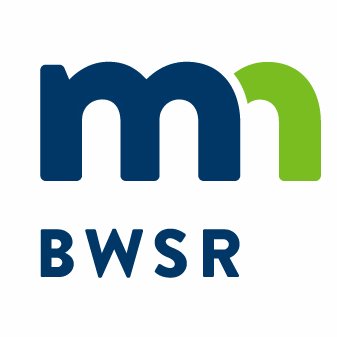Contact: Mary Juhl, 612-358-5733
CORRECTION: A previous version of this news release stated the total awards amount as $8.2 million. The correct total is $9.5 million.
December 18, 2024
ST. PAUL, Minn. – The Minnesota Board of Water and Soil Resources (BWSR) approved approximately $9.5 million in Clean Water Fund (CWF) grants today to improve water quality in streams, lakes and groundwater across the state. Most of the grant funding is allocated for voluntary conservation projects across Minnesota, including funding for projects that focus on improving and protecting drinking water.
“Local governments are ready to work with private landowners across Minnesota to implement projects that will make meaningful progress toward improving water quality,” said BWSR Executive Director John Jaschke. “These grants are a key component in ongoing efforts to keep our water clean and our lakes, rivers and groundwater healthy.”
BWSR awards competitive CWF grants annually. The state is shifting to a Watershed-Based Implementation Funding model, which offers consistent, noncompetitive funding to planning partnerships with approved watershed management plans. This helps partnerships focus on the highest priority projects within a specific watershed. Competitive CWF grants remain an important part of conservation delivery despite this shift, offering funding to individual districts for project implementation.
The $9.5 million will fund 34 grants. Learn more about the grant recipients.
Examples of planned grant work include:
Projects and Practices: The Anoka Conservation District will restore a 1.3-acre wetland adjacent to Anoka County Ditch 20. The project is located immediately upstream from Typo and Martin Lakes, which drain to the Sunrise and St. Croix rivers. The ditch will flow through the new basin, capturing an estimated 79-117 pounds of phosphorus annually. These reductions are expected to help remove the minimally impaired Martin Lake from the state’s impaired waters list and significantly move the other nutrient-impaired lakes and rivers toward delisting. This project has been a top watershed-level priority for at least 12 years.
Drinking Water: The Martin Soil and Water Conservation District will provide incentives for nonstructural conservation practices. Funds will also provide cost-share for seven high-priority structural practices identified in the city of Fairmont's Surface Water Intake Protection Plan, such as saturated buffers and wetland restorations. The goal is to improve drinking water quality for Fairmont residents. The city’s drinking water supply exceeded the drinking water standard for nitrates in 2016. Phase 2 of this multi-faceted water quality restoration project will leverage federal funding and focuses on providing targeted incentives and installing agricultural best management practices to reduce nitrogen, phosphorus and sediment.
Accelerated Implementation: The Lower Mississippi River Watershed Management Organization (LMRWMO) and its member cities plan to develop watershed-wide water quality modeling to identify and prioritize water quality improvement practices to maximize pollutant reduction benefits. This information will be used to inform future LMRWMO and member city management actions regarding the design, planning, identification and implementation of best management practices.
About the Clean Water Fund
Minnesota voters approved the Clean Water, Land and Legacy Amendment in 2008 to protect, enhance, and restore wetlands, prairies, forests, and fish, game, and wildlife habitat; to preserve arts and cultural heritage; to support parks and trails; and to protect, enhance, and restore lakes, rivers, streams, and groundwater. The Clean Water Fund receives 33 percent of the sales tax revenue generated by the Legacy Amendment. More information about the Clean Water Fund is available here.

